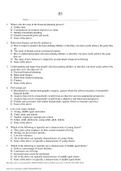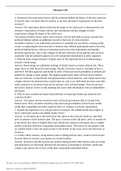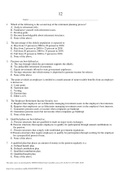econ 101
University Of Arkansas - Fayetteville
All 4 results
Sort by

-
University of Arkansas ECON 101 PFP Chapter 3 Q&A Updated Summer 2023.
- Other • 8 pages • 2023
-
- $9.49
- + learn more
What is the first step in the financial planning process? A. Gather data. B. Communicate investment objectives to client. C. Identify household spending. D. Identify household goals and needs. E. None of the above. 2. Behavioral finance can best be defined as: A. How to improve people's decision-making abilities so that they can more easily achieve the goals they set. B. The study of human actions in financial matters. C. How to understand people's decision-making abilities so that t...

-
University of Arkansas ECON 101 chapters Exams, Guaranteed success_ Complete Exams reviews + Study guides_ Latest Fall 2022-2023.
- Package deal • 14 items • 2023
-
- $26.49
- + learn more
University of Arkansas ECON 101 chapters Exams, Guaranteed success_ Complete Exams reviews + Study guides_ Latest Fall 2022-2023.

-
University of Arkansas ECON 101 PFP Chapter 18 Complete Q&A (2022/2023.)
- Exam (elaborations) • 9 pages • 2023
- Available in package deal
-
- $9.49
- + learn more
1. What is financial integration? A. Using all assets and liabilities, all cash flows, all household activities, and all future plans to arrive at decisions. B. Including all current and future resources and information in decision making. C. Making one decision at a time based strictly on the merits of that item. D. Both a and b. E. Both b and c. 2. Which of the following is not a way through which to make integrated financial decisions? A. Total portfolio management. B. Capital needs ...

-
ECON 101 PFP Ch10 Complete Q&A (2022/2023.)
- Exam (elaborations) • 8 pages • 2023
- Available in package deal
-
- $9.49
- + learn more
1. Which of the following is the second step of the retirement planning process? A. Analyze retirement risks. B. Familiarize yourself with retirement issues. C. Develop goals. D. Become knowledgeable about retirement structures. E. None of the above. 2. The percentage of the elderly population is expected to: A. Rise from 15 percent in 2000 to 20 percent in 2030. B. Rise from 5 percent in 2000 to 25 percent in 2030. C. Fall from 20 percent in 2000 to 15 percent in 2030. D. Fall from 25...



